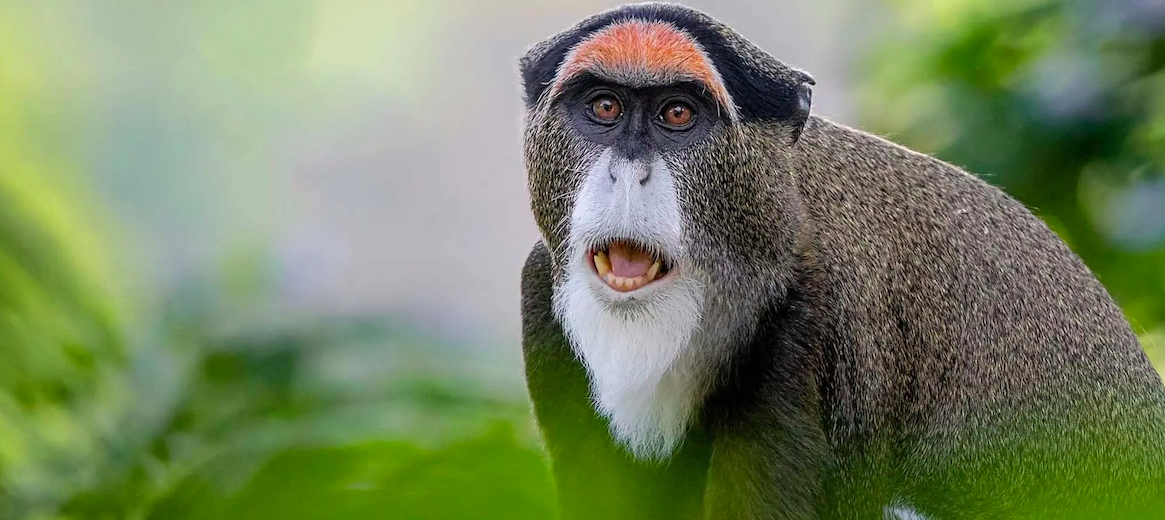
The De Brazza’s monkey, aka De Brazza’s guenon, is an Old World monkey (monkeys from Africa and Asia) that hails from central Africa. They prefer lowland tropical forests, mountain forests, and thick swamp forests. These critters are among the most widely found arboreal (spend their lives in trees) monkeys in Africa. Even though they face the threats of habitat destruction, at the hands of agriculture and the logging industry; hunting; and trapping, they are still listed as Least Concern by the IUCN.
First the Stats…
Scientific name: Cercopithecus neglectus
Weight: Up to 8.3 lbs.
Length: Up to 3.1 feet, plus up to a 5 foot tail
Lifespan: Up to 30 years
Now on to the Facts!
1.) These social primates gather into troops of up to 10 individuals. However, larger groups of up to 30 have been documented.
2.) They may be social amongst their own kind, but they are fiercely territorial towards other primates.
3.) When threatened by a potential predator, they will retreat to nearby trees and stay motionless till the threat passes.
4.) De Brazza’s monkeys are typically crepuscular (active during dawn and dusk). But they also exhibit diurnal (active during the day) behaviors as well.
5.) A group of monkeys is called a barrel, cartload, tribe, troop, or wilderness.
But wait, there’s more on the De Brazza’s monkey!
6.) They use all 4 limbs to move about, unlike most other monkeys.
7.) Not only can they be found in trees and on the ground, but they can also be seen swimming.
Did you know…?
When they flee from danger, they will curl up in a ball and can stay that way for up to 8 hours.
8.) A majority of their time awake is spent roaming, searching for food, social grooming, and slamming branches.
9.) These primates feed on fruits, flowers, leaves, and mushrooms, with the random addition of termites, beetles, and worms.
10.) De Brazza’s are polygynous (1 male mates with multiple females) in some locales and monogamous (mates for life) in other populations. With regards to the polygynous troops, 1 male will breed with up to 10 females.
But wait, there’s still more on the De Brazza’s monkey!
11.) Females undergo up to a 6 month gestation (pregnancy) that yields a single infant.
12.) After birth, the infant will cling to it’s mother’s abdomen and nurse for up to 1 year. However, in about 2 months, they are typically weened and start taking solid foods.
13.) Like squirrels and hamsters, these primates will cache (store) food in their cheek pouches.
14.) Their Latin name “neglectus”, means ‘neglect’. This is due to their primary defensive instinct to freeze when threatened, De Brazza’s monkeys usually freeze, neglecting their surroundings.
15.) Chimpanzees, crowned eagles, dogs, leopards, and pythons all prey on these monkeys.
Now a Short De Brazza’s Monkey Video!
Be sure to share & comment below! Also, check out the Critter Science YouTube channel. Videos added regularly!
Want to suggest a critter for me to write about? Let me know here.
Think you know a lot about critters? Try your hand at these fun, free quizzes:



